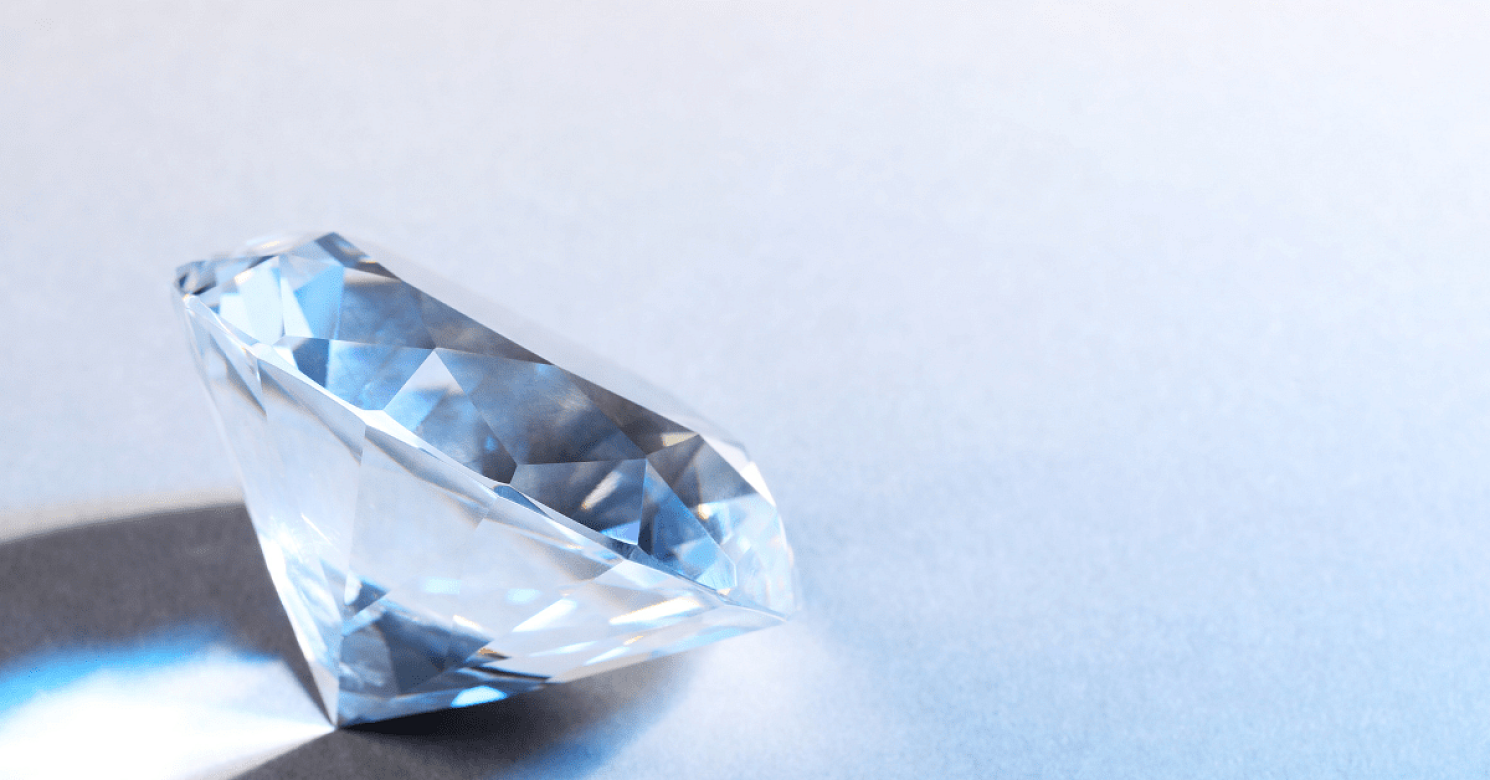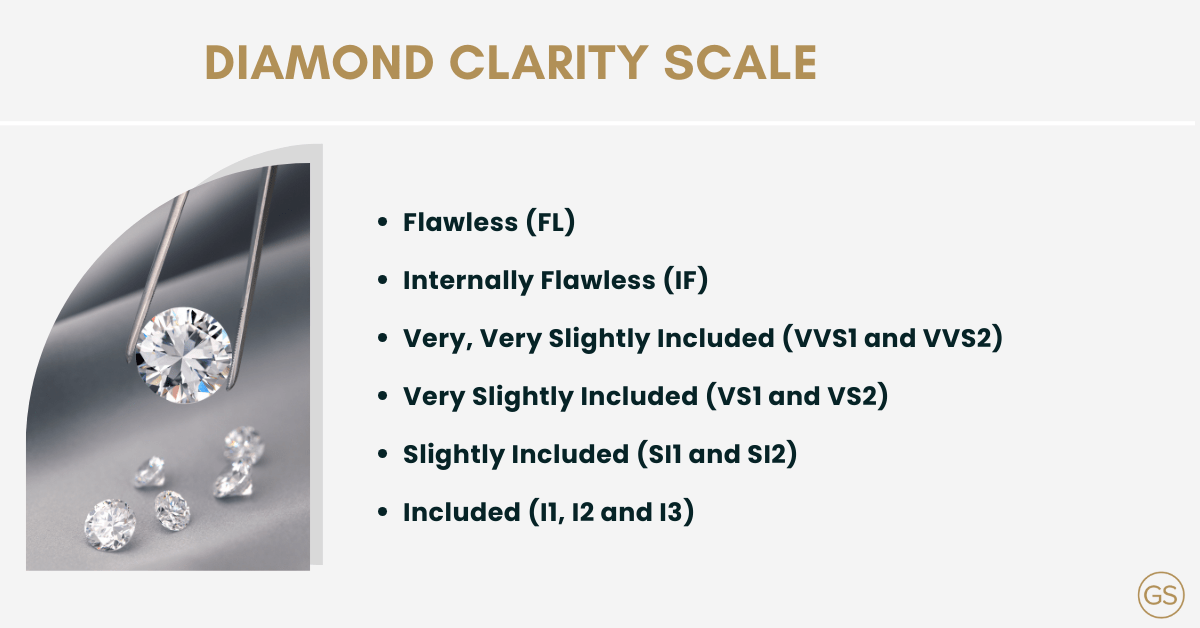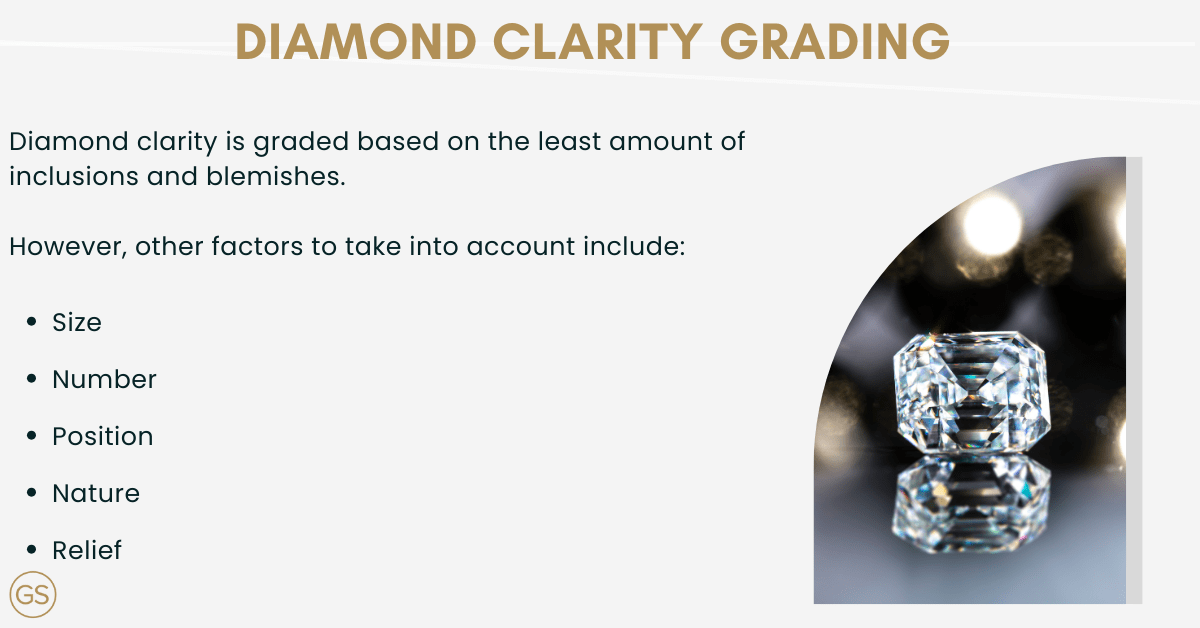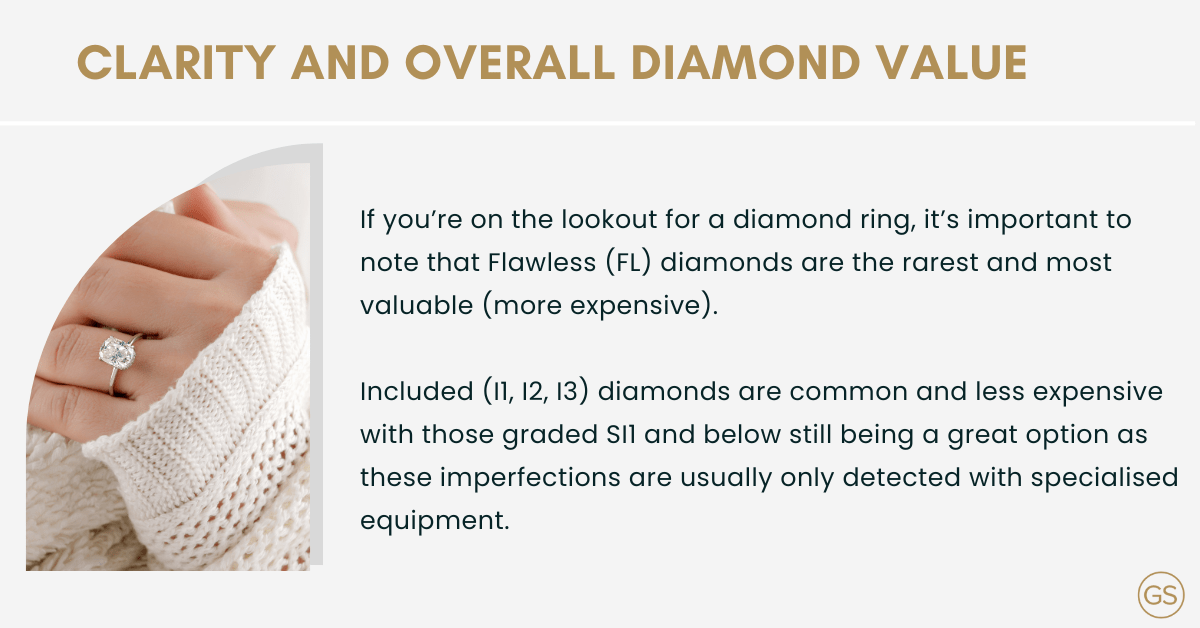
Diamond clarity refers to how flawless a diamond is — simply put, the better the clarity of a diamond, the more flawless it is.
Being naturally formed in the earth under immense pressure for thousands of years, diamonds don’t get damaged easily. Still, diamonds can end up with both internal and external imperfections as part of the formation process.
Internal imperfections are known as ‘inclusions’. Inclusions lie inside the diamond and can affect the way it reflects light and shines. They are commonly a result of smaller crystals that were trapped inside the diamond during the formation process.
External imperfections are called ‘blemishes’. Blemishes only exist on the outside or surface of the diamonds and can range from incorrectly cut facets or scratches. Their presence is usually due to errors or mistakes during the cutting and polishing process.
If all this sounds confusing to you, don’t worry. Just remember that the fewer inclusions and blemishes a diamond has, the higher its perceived clarity. Now that we’ve got the basics out of the way, let’s take a look at the diamond clarity scale.
Diamond clarity is graded on a scale ranging from Flawless to Included, with flawless being the highest level of diamond clarity. These grades are given to a diamond after meticulous observation under a microscope with 10x magnification.

Flawless (FL) — As the absolute cream of the crop, flawless diamonds don’t have any visible inclusions or blemishes, even under 10x magnification. Less than 1% of all mined diamonds are of flawless clarity.
Internally Flawless (IF) — Internally flawless diamonds don’t have any visible inclusions at 10x magnification, but they may have some form of blemish.
Very, Very Slightly Included (VVS1 and VVS2) — At this grade, diamonds have inclusions that are almost unnoticeable by skilled graders under 10x magnification.
Very Slightly Included (VS1 and VS2) — Inclusions are more obvious at this clarity grade but are still small enough to be classified as minor.
Slightly Included (SI1 and SI2) — Noticeable inclusions can be seen at 10x magnification in diamonds at this grade.
Included (I1, I2, and I3) — Diamonds have apparent inclusions that not only affect their appearance but also their transparency and brilliance.
Diamond clarity is graded based on the presence of inclusions and blemishes — in general, the fewer there are, the better its clarity. However, skilled diamond graders also take into account the size, position, nature, and distinctiveness of these imperfections, as these factors can impact the natural brilliance of the stone.
Size
The bigger an inclusion is, the larger the impact it will have on the clarity of a diamond. Relatively large inclusions in a small diamond can be immediately noticeable without the need for magnification.
Number
The number of inclusions in a diamond will typically reduce its clarity grade, but this is not always the case. The size of inclusions is often compared with how many there are to measure their overall impact. For example, a diamond with 2-3 minor inclusions may be given a higher clarity grade than one with a single large inclusion.

Position
Inclusions can manifest anywhere within the diamond, and it’s usually those that are close to the surface that tend to have the biggest impact on clarity.
Nature
Diamond imperfections come in two forms — internal inclusions, and surface blemishes. Inclusions hold a higher weightage compared to blemishes.
Relief
Relief measures the distinctiveness of the inclusion or blemish in comparison to the diamond’s appearance. A pale-coloured inclusion in a colourless diamond will be of lower relief than a dark-coloured inclusion.
It’s exactly how you think it works — the higher the clarity, the more valuable the diamond.
Flawless diamonds hold the rarest clarity grade and are therefore much more highly prized.
Likewise, Included (I1, I2, and I3) clarity grade diamonds are the most common grade and where you can find diamonds at low prices.
When it comes to buying a diamond for a custom engagement ring or wedding ring, it’s natural to want only the very best to express your love, but it’s unrealistic to go hunting for flawless diamonds. FL-grade diamonds can reach prices of up to $10,000 per carat.
What you need to remember is that most inclusions are so tiny that they are only noticeable under 10x magnification. Most inclusions and blemishes in diamonds SI1 and above are so minuscule that to your naked eye, they can appear to have the same clarity as an FL diamond. We refer to these diamonds as “eye-clean” as no one will be able to see their imperfections without specialised equipment.

The Gemological Institute of America (GIA) is the world’s foremost authority on diamond grading based on the 4Cs — Clarity, Cut, Colour, and Carat. When diamonds are graded for their clarity (as well as the other quality factors), the GIA provides a certificate for it containing the exact details of its clarity grade and its inclusions and blemishes.
When you buy a diamond, you should receive a copy of this GIA certificate as proof of its authenticity. It also serves as a way to confirm the value of your diamond, so you can be confident of the diamond value that you’re paying for.
Diamond clarity is a big part of what makes diamonds so valuable — the brilliance you see when diamonds reflect light is an example of how clarity impacts the stone’s appearance. When shopping for a diamond, be sure to look for one that is eye-clean ( often SI1 grade and above). Eye-clean diamonds offer the best value for your money and ensure that your stone features a beautiful gleam unmarred by imperfections.
At GS Diamonds, we only stock diamonds that are SI2 clarity grade and above as part of our commitment to providing the finest quality diamonds in Sydney, Brisbane, Melbourne and across Australia. If you ever have any concerns regarding the clarity of the diamond you are interested in, our GS Diamonds team of experts can assess if it is "eye clean" by engaging directly with our trusted suppliers.